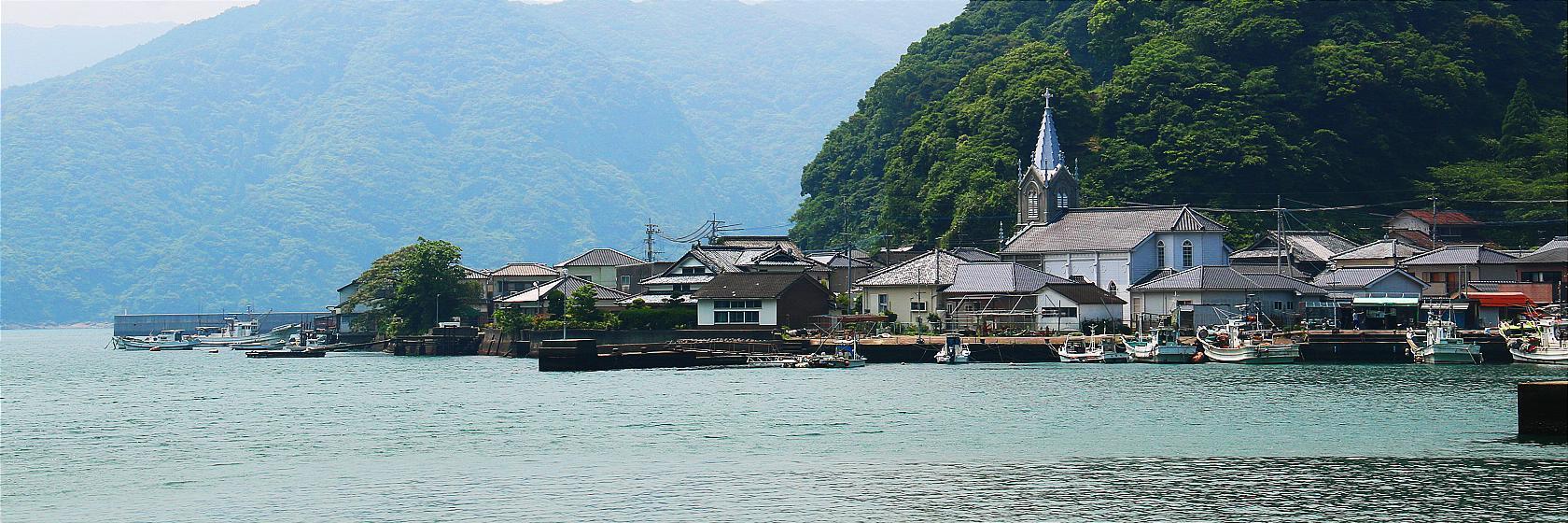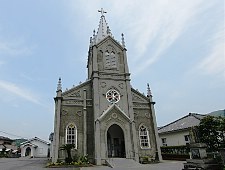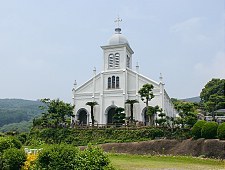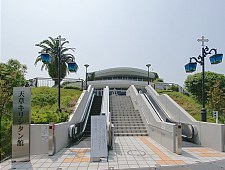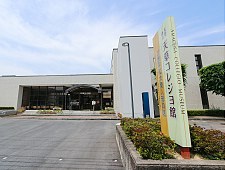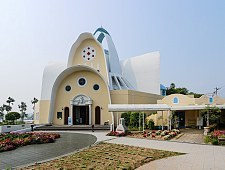Amakusa (天草) is an island group about 60 kilometers southwest of Kumamoto City in western Kyushu. Made up of two big islands and hundreds of smaller islands, Amakusa is remote and rural with nice natural scenery. This isolation allowed missionaries to convert a considerable percentage of inhabitants and even the local lord (daimyo) to Christianity before the religion was forbidden in the early Edo Period. Today there are numerous museums and churches spread across the islands which reflect this religious heritage.
The three main islands of Amakusa (Shimoshima, Ueshima and Oyano) are connected to one another and to the mainland of Kumamoto by bridges, while ferries provide connections to the smaller islands. Amakusa is abundant with lush greenery and natural geological formations that earned the islands a designation as national Geopark. In addition, wild dolphins live amongst the islands and can be seen on boat tours.
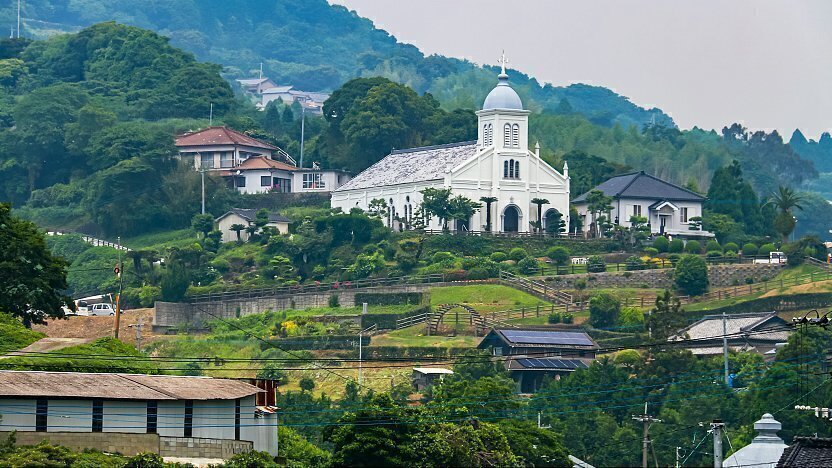
During the early Edo Period, the Amakusa Islands suffered a period of famine and harsh treatment of its lower classes. Fed up with heavy taxation of the poor and the persecution of Christians, peasants from the Amakusa Islands and nearby Shimabara Peninsula rose up against their lord in 1637-1638. The so called Shimabara Rebellion, named so because it was mainly fought on the neighboring peninsula, was one of the largest peasant uprisings during the Edo Period.
The rebellion was eventually put down by an overwhelming Shogunate force and ended in the death of the entire rebel army, including its young leader, Amakusa Shiro. Afterwards, the Tokugawa Shogunate further enforced its ban of Christianity. All missionaries were expelled from Japan, and a nationwide crackdown on practicing Christians was carried out, especially in the Amakusa and Shimabara regions where the religion was widely established.
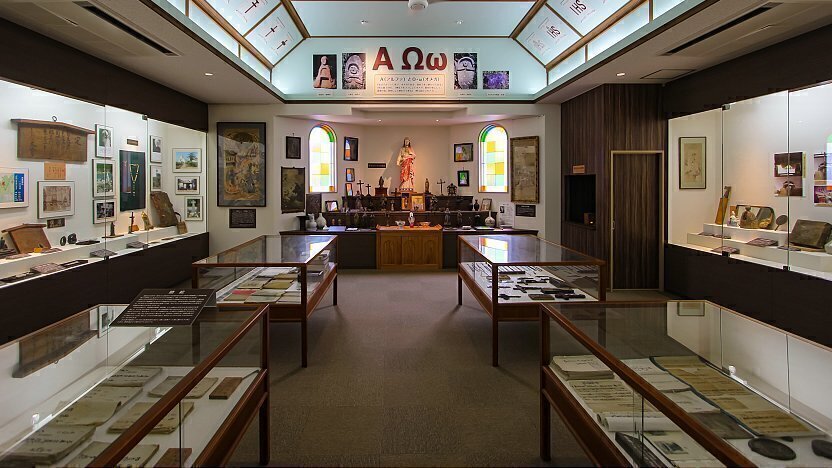
Those who continued to practice in the area, the "Hidden Christians", found ingenious ways to continue exercising their faith by disguising it as Buddhism. Images of the Virgin Mary were made to resemble the Buddhist Kannon, while crucifixes, crosses and the Virgin Mary were carved into the back of Buddhist statues or hidden in concealed objects. Christians altered their prayers to resemble Buddhist chants and would congregate in the dead of the night so as not to be discovered.
Yearly checks on the locals were carried out to root out Christians. One of the methods of ascertaining if one was Christian was to have them step on an image of Christ. Christians who refused to step on the image were subjected to torture until they denounced their faith or were sentenced to death.
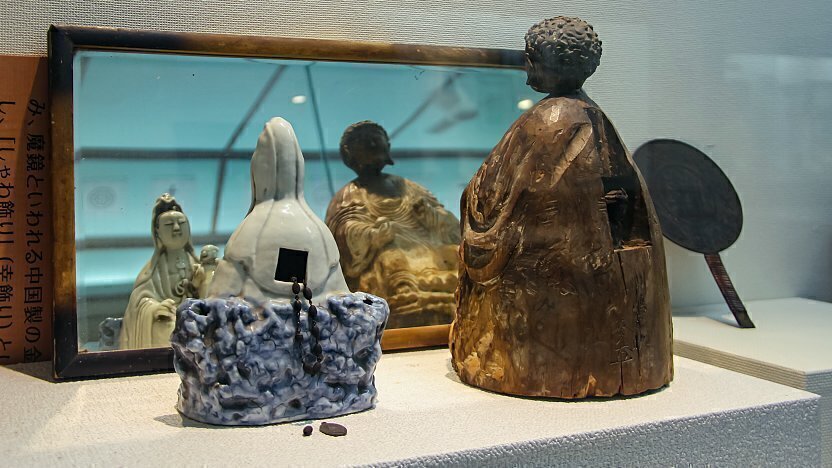
Below is a list of some churches and museums where religious items and statues, edicts and stories from this period of Christianity in Japan can be seen.
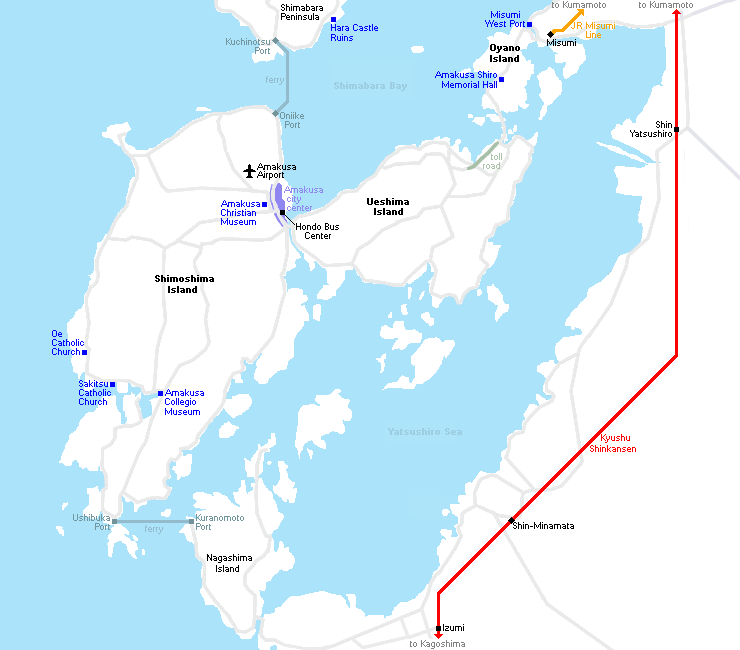
Shimoshima Island
Oyano Island
Getting there and around
How to get to Amakusa
By air
Amakusa Airlines serves Amakusa Airport on Shimoshima Island with daily flights from Osaka (1.5 hours, 20,000-30,000 yen one way), Fukuoka (35 minutes, around 14,000 yen one way) and Kumamoto (20 minutes, around 8500 yen one way). A shuttle bus from the airport into central Amakusa City takes about 15 minutes and costs 380 yen one way.
By land from Kumamoto
Kyushu Sanko Bus operates one bus every 1-2 hours between Kumamoto (Kumamoto Kotsu Center and JR Kumamoto Station) and Amakusa City (Hondo Bus Center, 本渡バスセンター) on Shimoshima Island (about 145 minutes, 2500 yen one way). Along the way, it serves multiple stops on Ueshima and Oyano Island. How to get to Kumamoto.
By ferry from the Shimabara Peninsula
Hourly ferries connects Kuchinotsu Port on the southern tip of the Shimabara Peninsula with Oniike Port at the northern end of Shimoshima Island in Amakusa. The one way ride takes about 30 minutes and costs 500 yen. The one way fee for a regular sized car is around 3000 yen. How to get to the Shimabara Peninsula
By ferry from Kagoshima
One ferry every 1-2 hours connects Kuranomoto Port on Nakashima Island in Kagoshima Prefecture with Ushibuka Port near the southern tip of Amakusa. The one way ride takes about 30 minutes and costs 540 yen. The one way fee for a regular sized car is around 3000 yen. Kuranomoto Port can be reached by bus from Izumi Station on the Kyushu Shinkansen (65 minutes, 1050 yen one way).

How to get around Amakusa
The three main islands of Amakusa, Shimoshima, Ueshima and Oyano, are connected to one another and to the mainland of Kumamoto by bridges, while ferries provide connections to the smaller islands and to the neighboring Shimabara Peninsula in Nagasaki Prefecture and Nagashima Island in Kagoshima Prefecture.
A bus network is available on the major islands of Amakusa. Bus service is relatively frequent (approx. hourly) along the major road that connects the Kumamoto mainland with Amakusa City and Ushibuka Port in southern Amakusa, but tends to be infrequent or inexistent elsewhere. Consequently, a rental car is the recommended means of exploring the islands. Rental car outlets are available in central Amakusa City or near major railway stations on the Kumamoto mainland.
Questions? Ask in our forum.
